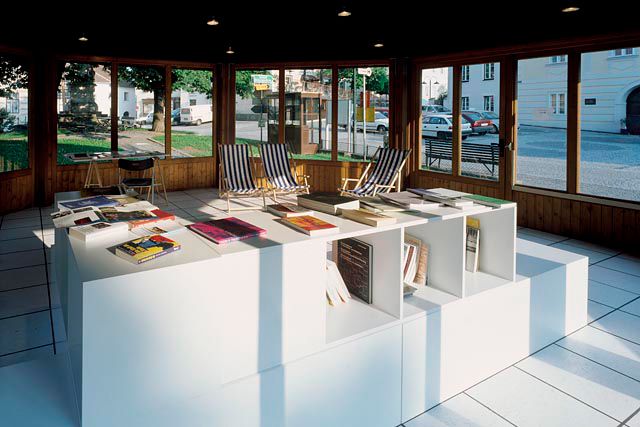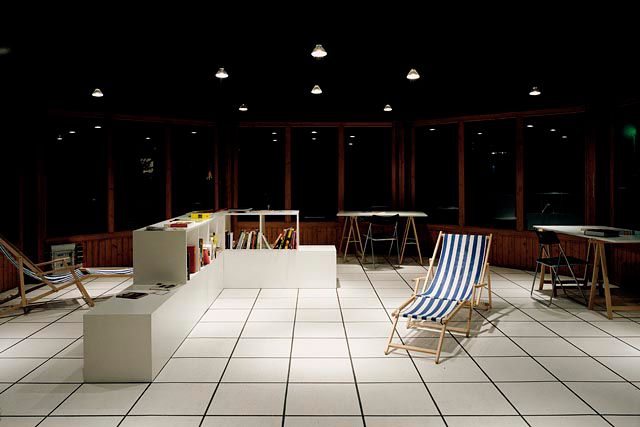Grand Summer On the Thaya
BackArtists
- With
Information
An initiative around the town wall of Drosendorf provided the impulse to address this feature in the local urban fabric as the starting point for an art project in public space. Here the original wish to network with other walled communities in Lower Austria played as much of a role as current issues addressing tourism, leisure activities and appropriate marketing strategies that many towns in Lower Austria have to consider. A predominately commercially oriented positioning is often accompanied by a dedication to culture that can lead to the creation of an event culture just as much as it can counter it. So, too, in Drosendorf the question of a tourism bonus was raised and provided the four artists' projects with premises that allowed a multi-perspectived treatment of historic architecture in a current, interdisciplinary context. All of the projects were specially developed for Drosendorf, and employed locally oriented practices to reflect both Drosendorf's treatment of historic substance as well as a broader contemporary context.
Contributors
- Kuration
Contributions
Andreas Fogarasi
"Planning Library"
In his project Planning Library, Andreas Fogarasi conducted research on the town, which is characterised by event culture and urban design and has itself adopted the status of a commercial enterprise, one which operates to promote tourism and increase profits. One of his posters was called 'CULTURE PARK', which is based on the formal analysis of social problems. It addresses this perception of political cultural phenomena in a controlled experiential world, which Fogarasi frequently discusses and employs in installations as models. In Drosendorf he reacted to the situation which had been alluded to with Marco Lulic's lettering 'MUSEUM', filling empty an pavilion with new contents. The pavilion stemmed from the 1990s and was originally a showcase for cars. The community wanted to give it a new function, and the 'Planning Library' was a first step in this direction. The small round structure was fitted out with flooring, light and those minimalist elements typical of Fogarasi's work. His theme here recently was that of the town, or town/country, which he did not however approach with the usual clichéd view, using a library instead to open the subject up to public discussion.
Werner Kaligofsky
"Drosendorf"
During his research into Drosendorf, the Waldviertel in Lower Austria and South Moravia Werner Kaligofsky came across something recounted to the Austrians by the Czech population after the fall of the iron curtain. According to this report the two communities of Drosendorf (in Czech: Drozdovice) and Jemnice (Jamnitz) were very alike in their beauty – like their two founders, the king's daughters Drozda, 'the thrush', and Jemna, 'the tender'. Accordingly, too, the inhabitants of the two towns lived "in harmony with one another, like sisters". Following up on this anecdote Werner Kaligofsky travelled the Czech-Austrian border area between Drosendorf and Jemnice looking for similarities and differences in the communities and countries with their different languages. He combines photographs gleaned from the undertaking on posters with fragments of text, also found, superimposed over the images. The posters were hung on wooden stands singly or in groups around Drosendorf, Jemnice and the border area.
Marco Lulić
"Museum.Disco.24/7 Shop."
The Museum is an exemplary 20th century space, one which has had to continually confront new tasks and issues since the fin de siecle. Finally, in the 1960s, it was the artists themselves who believed they had overcome the museum and invented other locations for exhibitions. The disco, though, is that heavily frequented space that has held youths in bated breath through the second half of the 20th century and up to today. It has been appropriated equally by towns as much as in the country, and in the counties of Lower Austria, often attracting attention at night with laser beams. The 24-hour store is a newcomer to this group, one that has not yet established itself in Austria but, in line with the capitalist system of profit-maximisation, it is on its way. The locations for Marco Lulic's colourfully illuminated words, on the town wall, Burgfried or pavilion, are static places that characterised Drosendorf associated with places that are both near and distant. These places did not really exist but were presented on television and in the press, so not only addressing a sense of the placelessness of places as the representative tone-giving labelling of these places that covered the last century in three lines of text.
Mahony
"Drei Minuten Happy End in Drosendorf"
The Happy-End Machine by the group of artists Mahony was chain-driven by the person filming. Hauptplatz, the main square in Drosendorf, was turned into a large film location, and in this setting the machine imitated the cinemascope format of major Hollywood films. The presentations consisted of two actors in a love scene with a happy ending that fades dramatically accompanied by stirring film music and the words "The End". The 'film' could be seen at the same time from the other side of the square.


